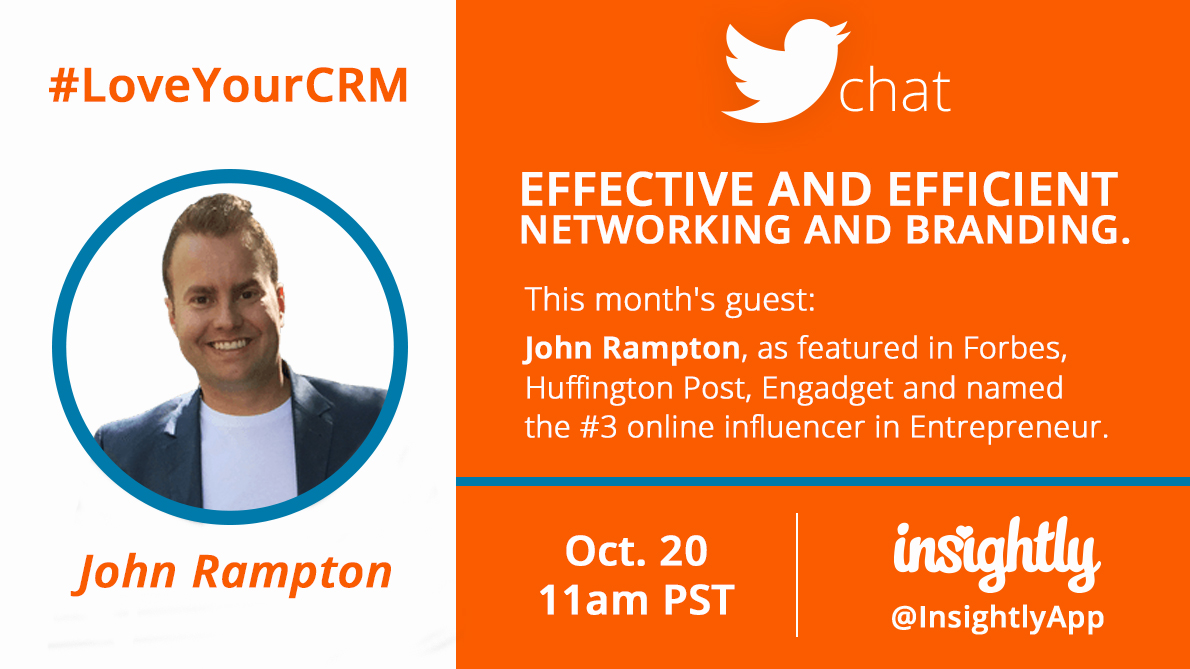
There’s a two-letter word that stings even the most seasoned professional’s ears. That word is, of course: no.
Your great ideas are dashed once again. If only the client would listen to you!
The good news is that the client still appreciates your opinion. Nothing has really changed; you’re continuing to serve his needs as you always have. The bad news is that you still think this idea could be a game-changer. What are you to do?
In this post, I’ll share seven steps for dealing with rejection from your customers.
- Re-Examine Your Pitch
After the dust of rejection settles, it’s wise to re-evaluate and determine what exactly went wrong. Even if you think the window of opportunity has completely closed, doing a self-examination can be useful for personal growth.
I often ask myself the following questions when doing a retrospective:
Was my performance to blame?
We’re often our own worst critics. Try to avoid being too harsh on yourself, and instead evaluate the situation objectively. Did you pitch the idea at the wrong time? Did you seem rushed or uncertain? Were there questions that you could not answer? Were you in a bad mood or forgot to drink enough coffee?
Did my proposal have issues?
If you prepared a formal proposal, allow a few days to pass and review it once again with a fresh set of eyes. Were the graphics confusing? Did you make an obvious error or oversight? Was the presentation too vague or overly complex? Did the client flip to the back and peek at the proposed cost (before you had a chance to finish your presentation)?
What exactly did the client hear?
Most proposals (if implemented) come with a tangible cost. Even the most value-focused client occasionally has an issue seeing past the upfront investment in a program. If you think this is the case, what could you have done differently to gain buy-in? Was the payback period too long or difficult to quantify?
Is there still hope?
With all of this information in mind, you should then go into your CRM and update the opportunity record. If there is no hope of resurrecting the opportunity, mark it as closed (lost) and indicate a reason. However, if you’re not giving up, leave it open, add some notes, and assign yourself a task to take additional action (see the next steps).
- Gather More Supporting Data
Regardless of what went wrong, you’ll most likely need to do some additional homework before adjusting your pitch. Put yourself in the shoes of the client for a moment. If you were the customer and rejected a pitch, what would cause you to reconsider? What challenges do you currently face that this would either solve or greatly improve?
Customers usually become open minded when they are convinced that a project will help:
- Immediately grow sales
- Reduce a significant expense
- Dramatically increase web leads
- Eliminate a serious pain point
- Increase exposure as an industry thought leader
If you hope to reposition your idea to the client, you’ll need to identify data that proves (beyond a doubt) that one or more of these is true. For example, as a marketing consultant, I routinely pitch clients on paid advertising campaigns. I always ask the media agency to provide plenty of historical open, click, and conversion data. With this information in hand, I can make a very strong case for several of the aforementioned bullet points.
Customer success stories can also serve as invaluable resources. Naturally, depending on your client relationships, you may want to redact sensitive information. Even without private information, you can speak generally to the issue that was solved through the solution you proposed. Most customers don’t like being guinea pigs; therefore, letting another one of your clients fill that role can make it easier for the risk-averse to trust your judgment (once it works).
- Adjust Your Mix
You’re now armed with additional research, and you’ve received a task email reminder from Insightly. It’s the moment of truth: time to adjust your pitch.
You now have a decision to make. Given what you know, is this really worth keeping alive? Do you still believe in the value of the project? If the answer is no, your time is obviously too valuable to waste. However, if you’re still a believer, you have work to do.
Before you spend a lot of time on recrafting your pitch, decide which elements need the most attention. Remember, your goal is to sell the client with the least amount of effort. Starting over from scratch is rarely necessary.
If, on the original approach, you had created a formal presentation, consider duplicating the slides into a fresh version. Look for ways to reuse as much of the existing content while simultaneously adding in supporting research and findings from your retrospective. Try to think like your client. If you were the client, what would be your objections to the updated proposal? What parts still raise doubt? What can you do to simplify the value proposition even further?
On the other hand, if your original proposal was casual in nature, perhaps a more visual approach is what you need. This, of course, hinges upon your relationship with the customer. Preparing a presentation deck is one possible route, but you also run the risk of appearing too salesy. Another approach, which can oftentimes be more effective, involves using screen sharing tools to demonstrate your ideas. Sharing your screen is a non-threatening way to pitch clients, especially when it comes to gaining buy-in for new software, processes, or graphical projects.
- Identify the Perfect Moment
You’ve adjusted your pitch and feel confident in the revised value proposition. Now it’s time to circle back to the client. But when?
Clients’ needs and perspectives are constantly evolving. That’s good for you, especially when selling ideas or revisiting old ones. After some time has passed, you may get lucky and realize that the customer has totally forgotten about his original rejection of your idea. You must be ready to capitalize on this type of opportunity.
Or, it’s quite possible that bad timing was the sole reason you lost the deal in the first place. Perhaps you accidentally pitched the customer on the same day his dog died. Maybe he had to fire a long-time employee before meeting with you. The second time around, try to be especially strategic with your timing.
Here are a few approaches I’ve used in the past.
Taking the “Wait-and-See” Approach
The nature of urgency will dictate whether or not you can take this approach. This strategy involves waiting for the customer to express the correct buying signals. When the customer expresses frustration with existing processes, you need to be ready to succinctly resurrect your pitch. A casual, yet confident demeanor can be quite compelling. Obviously, a formal proposal does not make sense for this approach. You just need to be prepared to sell the idea on the fly.
Adding to an Existing Agenda
Do you have regularly scheduled meetings with customers? If so, you might consider weaving your proposal into a future conversation. If you are in charge of setting the agenda, this might be an “optional” item you choose to discuss only when you sense the mood is right.
Scheduling a Dedicated Meeting
Perhaps the riskiest (and perhaps most rewarding) approach, try to pick a day that you know the customer is usually in a good mood. For example, if you were trying to sell me an idea, Friday morning would be much better than Monday afternoon. Get to know your clients and schedule accordingly.
- Reduce the Awkwardness
In most cases, your customer will remember that he passed on your original idea. Unless you handle the situation carefully, things can feel awkward for both parties. In extreme circumstances, the client may even think you’re questioning his prior judgment. It’s therefore important to mitigate these feelings from bubbling up.
Be prepared and have a plan. Unless the client has forgotten about your previous discussion, start the conversation by acknowledging the past. Pivot quickly to the heart of the discussion. You might considering saying:
- “Since our last discussion, several factors have changed….”
- “I know you’re always looking for opportunities, so I wanted to revisit…”
- “Several clients have seen great results from a topic we discussed…”
Once you’ve successfully made the transition and are presenting your ideas, stay keenly aware of the client’s body language. You need to keep the customer engaged, so don’t be shy to pose questions if you start losing momentum. By asking relevant questions, you help the customer verbalize his problems and, hopefully, connect the dots to the solution you are proposing. The right questions can also reduce the awkwardness of a one-sided conversation.
- Offer a Trial Basis
Even when customers like your ideas, there can still be some resistance to commitment. How can you make your proposal so enticing that clients feel no risk in moving forward? Take a page out of the software industry’s playbook and offer a free trial of some sort. Nothing sells an idea better than results.
You might be uncertain how offering a trial could work in your niche. Use your creativity to explore this concept before fully dismissing it. For example, as a marketing consultant, I could make an offer more enticing in the following circumstances:
- Blogging services: “Only pay if you’re happy with the content.”
- Web ad management: “Only pay for leads we generate in the first month.”
- New software: “I’ll pay for the first month to get it moving. You can reimburse me later.”
- New freelance team members: “Let me identify a slate of candidates.”
If you chose to extend a trial, be sure to make note of it in your CRM. If you’re using Insightly, consider adding detailed notes to the correct opportunity record. You may also want to adjust the projected revenue or close date, depending on what you offer.
- Pitch to a Different Client
When all else fails, you can always pitch the same great idea to your other customers. Just because one client says “no,” it doesn’t mean that your others will too.
Insightly users know that tags are extremely useful for organizing contacts and other records. Tags are also helpful for dealing with rejection. Depending on how you’ve structured your tags, it may be possible to quickly identify all of your customers who have similar needs.
For example, let’s assume you originally pitched your concept to a client in the insurance industry. After further thought, you realized the same idea would apply to any company that offers professional services. Luckily, for years you have been diligently tagging leads and contacts within Insightly. With a few clicks, you can instantly filter past and present customers in the services niche. Now, your idea can come to life – through more than one customer.
Of course, you’ll want to develop a similar plan for each client you intend to individually pitch. There’s nothing worse than a “canned” proposal that was obviously designed for a different audience.
If your idea has broad appeal, then a slightly different strategy would probably make sense. Figure out ways to “package” your concept, and evaluate the feasibility of bulk marketing tools for effectively communicating your vision. Just be sure that you can handle the influx of inquiries that may result from a mass communication strategy. You never want to offer a solution for which you don’t have the capacity.
Rejection is an Opportunity
Most rejection is not a dead-end; rather, in many cases, it is an opportunity to explore greater things. The next time a customer says that short, dreaded word (“no”), try to think of ways to convert it into an even better outcome. Use your creativity and knowledge to reshape how the customer understands your pitch. If that doesn’t work, shop your ideas to other clients who share the same needs. In time, you may find that an initial rejection has led to untold success for your business.
At Insightly, we offer a CRM used by small and mid-sized businesses from a huge variety of verticals. Learn about all of Insightly’s features and plans on our pricing page or sign up for a free trial.


Matt Keener is a marketing consultant and President of Keener Marketing Solutions, LLC. Matt specializes in content marketing and strategic planning, having helped numerous Saas (software as a service) companies and other small businesses worldwide. Read more of Matt’s work, check out his book, or connect with him on Linkedin.
































